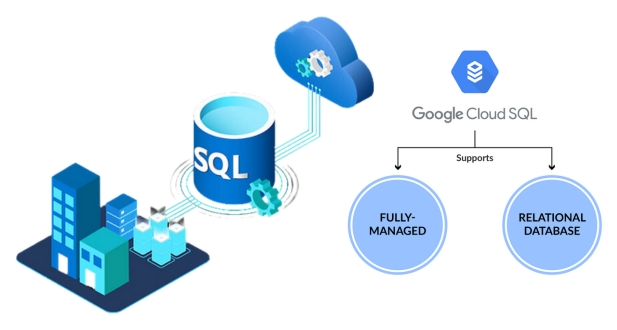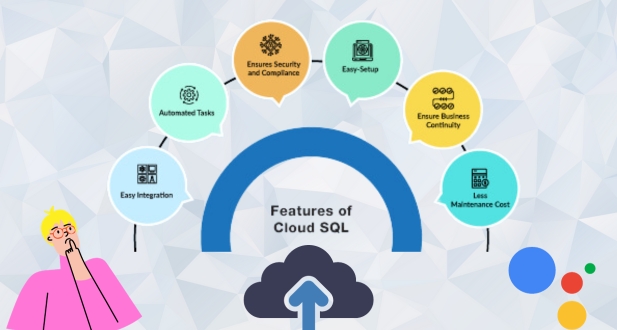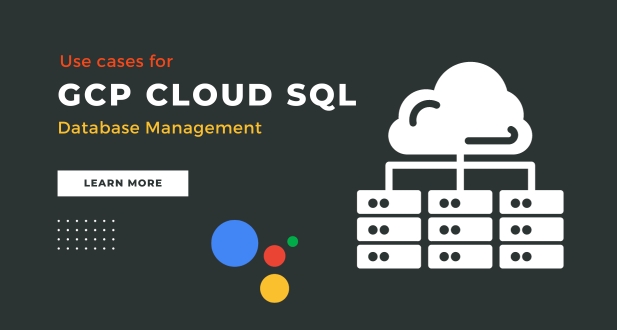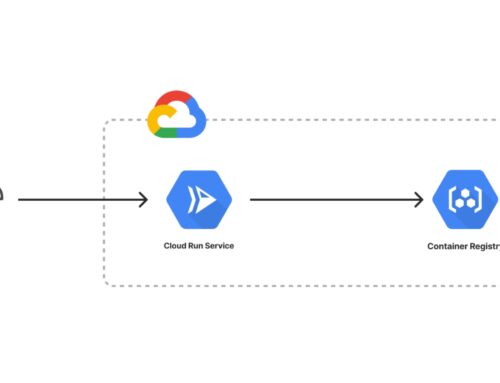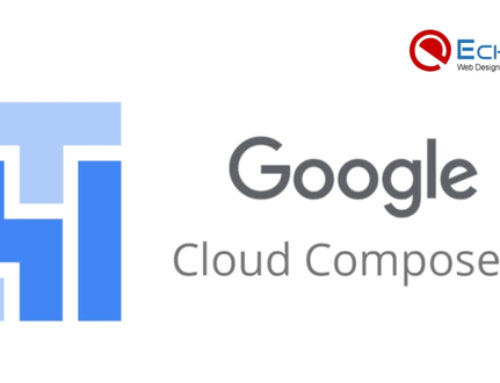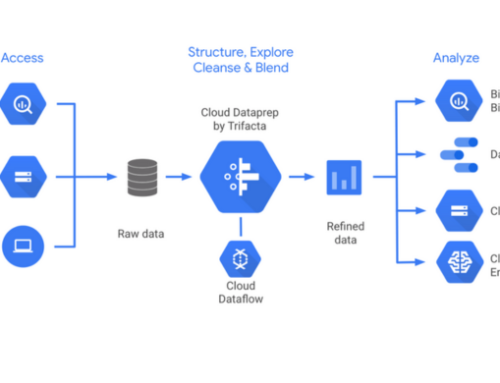Introduction to GCP Cloud SQL Database Management
Overview of GCP Cloud SQL Database Management
GCP Cloud SQL Database Management is a fully managed relational database service that makes it easy to set up, operate, and scale MySQL, PostgreSQL, and SQL Server databases in the cloud. It provides a range of features that simplify database administration, including automated patching, backups, and replication. Cloud SQL is also highly scalable, so you can easily provision and resize your databases as your needs change.
Benefits of using GCP Cloud SQL Database Management
There are many benefits to using GCP Cloud SQL Database Management, including:
- Reduced operational overhead: Cloud SQL automates many of the tasks involved in managing databases, such as patching, backups, and replication. This allows your IT staff to concentrate on more important duties. Increased scalability: Cloud SQL is highly scalable, so you can easily provision and resize your databases as your needs change. This makes it a good choice for applications with fluctuating traffic or unpredictable data growth.
- High availability: Cloud SQL offers a range of high availability options, including replication, failover, and disaster recovery. This helps to ensure that your databases are always available, even in the event of a hardware or software failure.
- Improved security: Cloud SQL provides a number of security features, such as encryption, access control, and intrusion detection. This aids in preventing theft and unwanted access to your data.
Key features of GCP Cloud SQL Database Management
Some of the key features of GCP Cloud SQL Database Management include:
- Automated patching and backups: Cloud SQL automatically patches your databases with the latest security updates and takes regular backups.
- Replication: You can replicate your databases to other regions or zones to ensure high availability and disaster recovery.
- Scalability: You can easily provision and resize your databases as your needs change.
- Security: Cloud SQL provides a number of security features, such as encryption, access control, and intrusion detection.
Use cases for GCP Cloud SQL Database Management
GCP Cloud SQL Database Management can be used for a variety of applications, including:
- Web applications: Cloud SQL is a good choice for web applications that require high availability and scalability.
- Mobile applications: Cloud SQL can be used to store data for mobile applications.
- Enterprise applications: Cloud SQL is a good choice for enterprise applications that require high performance and security.
Creating and Managing Cloud SQL Instances
Creating a Cloud SQL instance:
- Select the region where you want to create your instance.
The region determines where your instance’s data will be stored. It is important to choose a region that is close to your users to minimize latency.
- Select SQL Server, PostgreSQL, or MySQL as your database engine of choice.
Each database engine has its own strengths and weaknesses. MySQL is a good choice for general-purpose applications, while PostgreSQL is a good choice for applications that require complex data types. SQL Server is a good choice for applications that are already using SQL Server on-premises.
- Specify the instance size (machine type and storage).
The instance size determines the amount of compute and storage resources that your instance will have. You should choose an instance size that is large enough to handle the expected workload for your application.
- Provide a name for your instance.
The name of your instance will be used to identify it in the Cloud SQL console and the gcloud command-line tool.
- Create a password for the root user of your instance.
The root user has full administrative access to your instance. It is important to choose a strong password for the root user and to keep it safe.
Configuring Cloud SQL instance settings:
Once your instance has been created, you can configure its settings using the Cloud SQL console or the gcloud command-line tool.
Here are a few configuration options you have:
- Network settings: IP address, VPC network, firewall rules
These settings control how your instance can be accessed from the public internet and from other instances in your VPC network.
- Database settings: Character set, collation, time zone
These settings control the format of your data and how it is sorted.
- Logging settings: Logging level, logging destination
These settings control how much logging data is generated by your instance and where it is stored.
- Monitoring settings: Monitoring metrics, alerting thresholds
These settings control which metrics are monitored for your instance and when alerts are triggered.
Managing Cloud SQL instance resources:
You can manage the resources of your Cloud SQL instance using the Cloud SQL console or the gcloud command-line tool.
Some of the resources you can manage include:
- Storage: Adding or removing disks
You can add more disks to your instance to increase its storage capacity. You can also remove disks if you no longer need them.
- Memory: Increasing or decreasing memory
You can increase the memory of your instance to improve its performance. You can also decrease the memory of your instance to save costs.
- CPU: Increasing or decreasing CPU cores
You can increase the number of CPU cores of your instance to improve its performance. You can also decrease the number of CPU cores of your instance to save costs.
Monitoring Cloud SQL instance performance:
You can monitor the performance of your Cloud SQL instance using the Cloud SQL console or the gcloud command-line tool.
The Cloud SQL monitoring dashboard provides information about the instance’s CPU usage, memory usage, disk I/O, and network traffic.
You can also set up alerts to be notified when certain performance metrics exceed thresholds.
Migrating Databases to Cloud SQL
Planning and preparing for a Cloud SQL migration
Before you begin migrating your databases to Cloud SQL, it is important to carefully plan and prepare for the migration. This will help to ensure that the migration is successful and that there is minimal downtime for your applications.
Here are some of the things you should do when planning for a Cloud SQL migration:
- Assess your current database environment and applications: Identify the databases that you want to migrate, the applications that use them, and any dependencies that exist.
- Choose a migration strategy: There are a number of different migration strategies that you can use, such as lift-and-shift, dump-and-reload, and replication-based migration.
- Select the appropriate migration tools: There are a number of different migration tools available, both from Google and from third-party vendors.
- Schedule the migration: Choose a time for the migration when there will be minimal impact on your users.
- Test the migration: Before you migrate your databases to production, you should test the migration in a staging environment.
Migrating databases using the Cloud SQL Migration Service
The Cloud SQL Migration Service is a fully managed service that makes it easy to migrate your databases to Cloud SQL. It supports a variety of migration strategies, including lift-and-shift, dump-and-reload, and replication-based migration.
To migrate your databases using the Cloud SQL Migration Service, you will need to:
- Create a migration job: The migration job defines the source and destination databases, the migration strategy, and the migration schedule.
- Start the migration job: The migration job will copy your data from the source database to the destination database.
- Monitor the migration job: You can monitor the progress of the migration job using the Cloud SQL console or the gcloud command-line tool.
- Promote the migrated database: Once the migration is complete, you can promote the migrated database to production.
Migrating databases using third-party tools
There are a number of third-party tools available that can be used to migrate databases to Cloud SQL. These tools often offer additional features and flexibility compared to the Cloud SQL Migration Service.
Some popular third-party migration tools include:
- BMC Database Migration
- Informatica Cloud Data Integration
- Talend Data Fabric
Validating and optimizing migrated databases
Once you have migrated your databases to Cloud SQL, it is important to validate that the migration was successful and to optimize the performance of your databases for the cloud.
You can validate the migration by comparing the data in the source database to the data in the destination database. You can optimize the performance of your databases by using the Cloud SQL monitoring dashboard to identify and resolve performance bottlenecks.
Securing Cloud SQL Databases
Ensuring data security is paramount in today’s digital landscape, and Cloud SQL provides various safeguards to protect your databases from unauthorized access, data breaches, and other security threats.Here’s a comprehensive overview of securing Cloud SQL databases:
Implementing database access control
Database access control is essential for protecting your data from unauthorized access. Cloud SQL provides a number of features that you can use to implement database access control, including:
- User authentication: Cloud SQL supports a variety of authentication mechanisms, such as password authentication, IAM, and OAuth.
- Authorization: Cloud SQL supports role-based access control (RBAC), which allows you to grant users specific permissions to perform actions on your databases.
- Auditing: Cloud SQL logs all access to your databases, so you can track who is accessing your data and what they are doing with it.
Encrypting data at rest and in transit
Data encryption is another important security measure for protecting your data from unauthorized access. Cloud SQL provides a number of encryption options, including:
- Data encryption at rest: Cloud SQL automatically encrypts your data at rest using AES-256 encryption.
- Data encryption in transit: Cloud SQL supports SSL/TLS encryption for all data transfers between your application and your Cloud SQL database.
- Key management: Google Cloud Key Management Service (Cloud KMS) allows you to manage the keys used to encrypt your data.
Protecting against common database vulnerabilities
Common database vulnerabilities can be exploited by attackers to gain unauthorized access to your data or to disrupt your applications. Cloud SQL provides a number of features that you can use to protect against common database vulnerabilities, including:
- Patching: Cloud SQL automatically applies security patches to your databases.
- Vulnerability scanning: Cloud SQL can be scanned for vulnerabilities using Cloud Security Command Center (Cloud SCC).
- Web application firewalls (WAFs): Cloud SQL can be protected by WAFs, which can block malicious traffic before it reaches your databases.
Conducting regular security audits and penetration testing
Regular security audits and penetration testing are essential to identify and address any potential security weaknesses in your Cloud SQL environment. These proactive measures help to maintain a strong security posture and protect your data from evolving threats.
Backing Up and Restoring Cloud SQL Databases
Effective database management is crucial for ensuring the integrity, availability, and recoverability of data. In Google Cloud SQL, robust backup and restore mechanisms are pivotal components of a comprehensive database management strategy.
Configuring Automated Database Backups
Configuring automated backups in Cloud SQL is a fundamental step in safeguarding your database. Through the Google Cloud Console or the Cloud SQL API, users can easily set up scheduled automatic backups. These backups are incremental and capture changes to the database since the last backup, ensuring both data consistency and reduced storage costs. By specifying the preferred backup window and frequency, organizations can tailor the automated backup strategy to suit their operational needs.
Manually Backing Up and Restoring Databases
While automated backups provide a seamless and routine approach to data protection, Cloud SQL also empowers users with the flexibility of manual backups. Users can initiate on-demand backups before critical updates or modifications, ensuring a restore point for specific database states. This manual control is valuable for scenarios where real-time precision is required. Similarly, the process of restoring databases manually provides users with granular control over the recovery process. Whether reverting to a specific point in time or cloning a database for testing purposes, manual backups and restores offer a tailored approach to database management.
Managing Backup Retention Policies
The management of backup retention policies is essential for optimizing storage utilization and aligning backup strategies with organizational requirements. Cloud SQL allows users to define how long automated backups should be retained, striking a balance between historical data preservation and storage efficiency. Through simple configurations, organizations can align backup retention policies with compliance standards and internal data management protocols.
Testing Backup Integrity and Restoring Databases
Ensuring the integrity of backups is as critical as the backup process itself. Cloud SQL allows users to test the integrity of backups by restoring them to a different instance or performing a point-in-time recovery. This proactive approach verifies the reliability of backups, enhancing confidence in the database recovery process and mitigating risks associated with data loss.
In conclusion, effective database management in Google Cloud SQL encompasses both automated and manual backup strategies, offering users the flexibility to tailor their approach to the unique needs of their applications. With features like automated backups, manual backup initiation, backup retention policies, and integrity testing, Cloud SQL provides a comprehensive suite of tools for robust data protection and recovery.
Monitoring and Optimizing Cloud SQL Performance
Efficient performance management is paramount for ensuring optimal functionality and responsiveness in Google Cloud SQL. Monitoring and optimizing performance involve a holistic approach, addressing potential bottlenecks, fine-tuning queries, scaling resources, and leveraging robust monitoring tools.
Identifying and Resolving Performance Bottlenecks
Identifying performance bottlenecks is a proactive measure to maintain a responsive database. Cloud SQL provides diagnostic tools, including the Query Insights dashboard, which highlights long-running and high-load queries. By analyzing these insights, administrators can pinpoint and address bottlenecks, optimize query execution plans, and adjust configurations to enhance overall performance.
Optimizing Database Queries and Schema
Optimizing the efficiency of database queries and schema design is integral to enhancing performance. Cloud SQL offers tools like the Query Performance and Explain features to analyze query execution plans. Through these tools, administrators can optimize queries, restructure indexes, and refine schema designs to improve execution times. By minimizing resource-intensive queries and ensuring an optimized schema, organizations can significantly boost database performance.
Scaling Cloud SQL Resources to Meet Demand
Scaling resources in response to demand fluctuations is a key strategy for maintaining consistent performance. Cloud SQL allows for vertical scaling by adjusting machine types or horizontal scaling by adding read replicas. Dynamic scaling ensures that the database infrastructure aligns with application demands, preventing performance degradation during peak usage periods.
Leveraging Cloud SQL’s Performance Monitoring Tools
Cloud SQL provides robust performance monitoring tools to offer real-time insights into database health. The Cloud SQL Insights dashboard displays metrics such as database activity, performance, and resource utilization. By leveraging these tools, administrators gain a comprehensive view of database performance, enabling them to make informed decisions to optimize and fine-tune as needed.
In summary, monitoring and optimizing Cloud SQL performance require a multifaceted approach. From identifying and addressing bottlenecks to fine-tuning queries and schema design, organizations can enhance performance. Additionally, the ability to scale resources dynamically and leverage performance monitoring tools empowers administrators to maintain a high level of responsiveness and efficiency in their Google Cloud SQL databases.
Cloud SQL: Maximum Uptime and Comprehensive Safety
Ensuring high availability and robust disaster recovery procedures are critical components of a resilient database management strategy. In Google Cloud SQL, these aspects are addressed through the implementation of replication, well-defined disaster recovery procedures, rigorous testing, and the utilization of Cloud SQL’s built-in features.
Implementing Replication for High Availability
High availability is achieved in Cloud SQL through the implementation of replication. Cloud SQL supports both read replicas and failover replicas. Read replicas enhance performance by offloading read operations, while failover replicas ensure continuous availability in the event of a primary instance failure. By configuring replication, organizations create a redundant architecture that minimizes downtime and guarantees uninterrupted access to the database.
Setting Up Disaster Recovery Procedures
Disaster recovery procedures are pivotal for maintaining data integrity and system availability in the face of unforeseen events. Cloud SQL supports robust disaster recovery planning through features like automatic backups and point-in-time recovery. Organizations can establish procedures that include regular backups, offsite storage, and comprehensive documentation outlining steps for recovery. These procedures are essential for swift recovery in the event of data corruption, accidental deletions, or system failures.
Testing and Validating Disaster Recovery Plans
Regular testing and validation of disaster recovery plans are essential to ensure their effectiveness when needed. Cloud SQL enables users to create test instances from backups, allowing organizations to validate the integrity of backup data and practice recovery procedures without impacting the production environment. Rigorous testing ensures that recovery processes are well-understood and can be executed seamlessly when necessary.
Utilizing Cloud SQL’s High Availability and Disaster Recovery Features
Cloud SQL offers built-in features to enhance high availability and disaster recovery. Automated failover ensures quick recovery from primary instance failures, minimizing downtime. With automatic backups, point-in-time recovery, and multi-region configurations, organizations can leverage Cloud SQL’s native capabilities to fortify their high availability and disaster recovery strategies.
In conclusion, high availability and disaster recovery planning in Cloud SQL involve a combination of proactive measures and strategic features provided by the platform. By implementing replication for high availability, establishing robust disaster recovery procedures, regularly testing plans, and leveraging Cloud SQL’s native features, organizations can build a resilient database infrastructure capable of withstanding unforeseen challenges and ensuring continuous access to critical data.
Compliance and Best Practices for Cloud SQL
Maintaining compliance with data privacy regulations, implementing effective data governance policies, and adhering to security best practices are paramount in Google Cloud SQL. A comprehensive approach ensures the protection of sensitive information, establishes data governance frameworks, and upholds the highest standards of security.
Ensuring Compliance with Data Privacy Regulations
Adherence to data privacy regulations is a foundational aspect of responsible data management. Google Cloud SQL facilitates compliance by providing features like encryption in transit and at rest, access controls through Identity and Access Management (IAM), and audit logging. Organizations can configure Cloud SQL to align with regional and industry-specific data protection requirements, ensuring that sensitive information is handled in accordance with relevant regulations.
Implementing Data Governance Policies and Procedures
Effective data governance is achieved through the implementation of policies and procedures that guide the management, access, and use of data. Cloud SQL allows organizations to define and enforce data governance policies through IAM controls, access management, and role-based access controls. By establishing clear guidelines for data access, modification, and deletion, organizations can ensure data integrity, traceability, and compliance.
Following Cloud SQL Security and Best Practices
Cloud SQL security is fortified by following best practices outlined by Google Cloud. This includes regular software updates, limiting access through secure network configurations, and utilizing features like VPC peering for enhanced network security. Adhering to these practices strengthens the overall security posture of Cloud SQL instances, reducing the risk of unauthorized access and data breaches.
Continuously Auditing and Improving Cloud SQL Security Posture
Continuous auditing is essential for maintaining a proactive security stance. Cloud SQL’s integration with Cloud Audit Logging provides detailed logs of user activity, enabling organizations to monitor changes, detect anomalies, and respond swiftly to potential security incidents. Regular audits contribute to an iterative process of improvement, ensuring a dynamic and resilient security posture.
In conclusion, compliance and best practices in Cloud SQL involve a multifaceted approach, encompassing regulatory adherence, governance policies, and robust security measures. By leveraging the features and tools provided by Cloud SQL, organizations can create a secure, compliant, and well-governed environment for their databases, instilling confidence in data management practices and fostering a culture of continuous improvement.
Future of Cloud SQL Database Management
The future of Cloud SQL database management holds promising advancements in line with the evolving landscape of cloud computing. As technology continues to progress, Cloud SQL is expected to witness enhancements that further streamline database operations, enhance scalability, and fortify security measures.
Anticipate the integration of cutting-edge technologies, such as machine learning and artificial intelligence, to optimize query performance and automate routine database management tasks. Cloud SQL may evolve to provide more intuitive and user-friendly interfaces, empowering users with advanced analytics and monitoring capabilities.
Furthermore, with the growing emphasis on data privacy and compliance, future iterations of Cloud SQL are likely to introduce features and configurations that facilitate adherence to increasingly stringent regulatory frameworks.
As the industry moves towards a more interconnected and dynamic cloud ecosystem, Cloud SQL is poised to play a central role in supporting diverse applications and workloads. Expect continuous updates and innovations from Google Cloud, ensuring that Cloud SQL remains a resilient, adaptable, and state-of-the-art solution for organizations seeking efficient and secure database management in the cloud.
Conclusion
In conclusion, the exploration of Google Cloud SQL database management reveals a robust and dynamic platform that aligns with the evolving needs of modern cloud environments. From high availability and disaster recovery strategies to performance optimization, compliance, and security, Cloud SQL offers a comprehensive suite of tools and features.
As organizations increasingly rely on cloud-based solutions for their data management needs, Cloud SQL stands as a reliable and scalable option. The platform’s commitment to automation, flexibility, and integration with cutting-edge technologies positions it as a vital component in the realm of database management.
